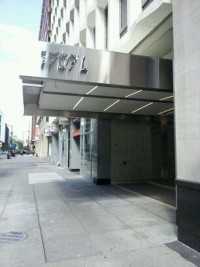IMT is moving to a new office in the fall, and while we plan to stay in roughly the same downtown DC neighborhood, a new lease offers us a chance to practice what we preach.
Green leases change some of the language in standard commercial leases to help landlords and tenants attain sustainability or energy efficiency goals. Since the lease lays out how various costs and benefits will be apportioned during occupancy, a properly conceived green lease will set the stage for greater energy savings than could be attained if each party acted alone.
Greening the Lease Before It’s Written
I’m the green leasing program manager, so I get to negotiate the parts of our new lease that determine how we’ll work with our new landlord to meet both parties’ energy and sustainability goals. If I do my job correctly, however, we’ll have accomplished many of our green-leasing goals before the landlord ever sends over a lease draft.
That’s because for tenants, the green-lease process starts with site selection, and both parties’ sustainability aims should be made clear during the LOI (letter of intent) process. This post will focus on just a few aspects of our site selection and LOI process.

As a nonprofit organization dedicated to energy efficiency in buildings, IMT wants to occupy the most energy-efficient space we can afford. So when Lotte, our COO, initiated site selection with our tenant rep (Jenna Polivka of Cassidy Turley), she made it clear that in addition to standard office selection factors like square footage and location, IMT would only lease space in a building with the ENERGY STAR label and/or LEED certification.
Since we’re based in a market that ranks second nationally in the number of ENERGY STAR buildings, Jenna was quickly able to provide several options that met our standard. But the lesson works just as well in markets not already saturated by green buildings: If you want green office (or retail) space, start by looking for buildings where the owner is already implementing energy efficiency improvements.
Asking the Right Questions
Once our broker had assembled an array of potential sites, we developed list of questions to ask during a building tour. These included:
- Does the building have a designated area for bike parking?
- What kind of recycling program does the building have?
- Is the building owner willing to submeter our plug loads and lights and bill us separately, so we can capture any gains from our energy efficiency?
- Does the building owner have some form of cost recovery for any energy efficiency upgrades they make to the base building systems?
When we went on our site tour and were able to ask property managers and leasing agents our key sustainability questions, their answers helped us understand each landlord’s approach to sustainability and what kind of energy efficiency improvements we could target in our new space. We were able to quickly narrow our search to two spaces, each of them meeting most of our criteria: ample bike parking, recycling, a reputation for sustainable operations, the potential to submeter our space, and space that would need minimal build-out to achieve above average energy efficiency.
By emphasizing our efficiency goals from the earliest stages of the leasing process, we laid the foundation for a green lease well in advance of actual lease negotiations.
Adam Sledd manages the green leasing and federal buildings program at IMT. The next post in this series will focus on negotiating the LOI and the tenant improvement (TI) allowance.